Frequently Asked Questions When Buying A Used AGA Stove
Purchasing a used AGA cooker is a wonderful and exciting investment. But information is scarce and, like we did, you probably have questions about moving them, installing them, and other practical concerns like if the oven compartments are too small. In this post we cover the gamut and answer the most frequently asked questions we get about our cast iron used AGA stove.
Why We Bought a Used AGA Cooker
We purchased a foreclosed, 5-acre homestead property in 2020 and the house needed some work. Finally, our opportunity to create our dream kitchen where we could live out our from scratch, home cookin’ fantasies!
Anyone else out there have an AGA cast iron stove in their dream kitchen? Thought so!
We were on a tight budget and knew we couldn’t afford a new AGA. So, we started looking for them used.
After searching for a couple months, the perfect opportunity for a used AGA cooker popped up on Facebook Marketplace and it was only about an hour away. We. Were. On. It.
We purchased it, moved it, installed it, and it is now fully integrated into our home and lifestyle. Success! But to get there we had to do a ton of research and educating ourselves on these novelty machines.
Used AGA Stove FAQ’s
We created another post after owning our AGA for a year that gives our full AGA Stove Review. That post explains more of how the cooker works and functions. Since then, the questions from others interested in AGA’s have come flooding in. Here are the most frequently asked questions we’ve received along with our answers:
1. Are the oven compartments too small and can you cook a turkey?
The dimensions of each oven are 13”W x 10”H x 20” deep. Yes, this is smaller than your typical range oven. We, however, have not found the oven compartments to be too small.
It is more a matter of having the right cookware to pair with your oven. For instance, we cook our sourdough deep dish pizza on a 12” cast iron pan which fits perfectly. A 14” cast iron pan would not fit. The cookie sheets we originally had were too wide to fit in the oven so we had to get new ones.
As far as a turkey goes, we have read that an AGA can fit up to a 28 lb. bird. We have not yet cooked a turkey in ours, but have cooked large chickens with no issues.
But again, it is primarily about having the right cooking vessel. A traditional large roasting pan will not fit in an AGA. We have a 9.5 Qt. Le Creuset dutch oven that fits very well and we use for larger poultry, roasts, soups, and more.
The 13” width will most likely be your limiting factor when trying to maximize capacity. AGA does make their own line of cookware designed for their ovens. Or you can look for something that works with the above-mentioned dimensions.
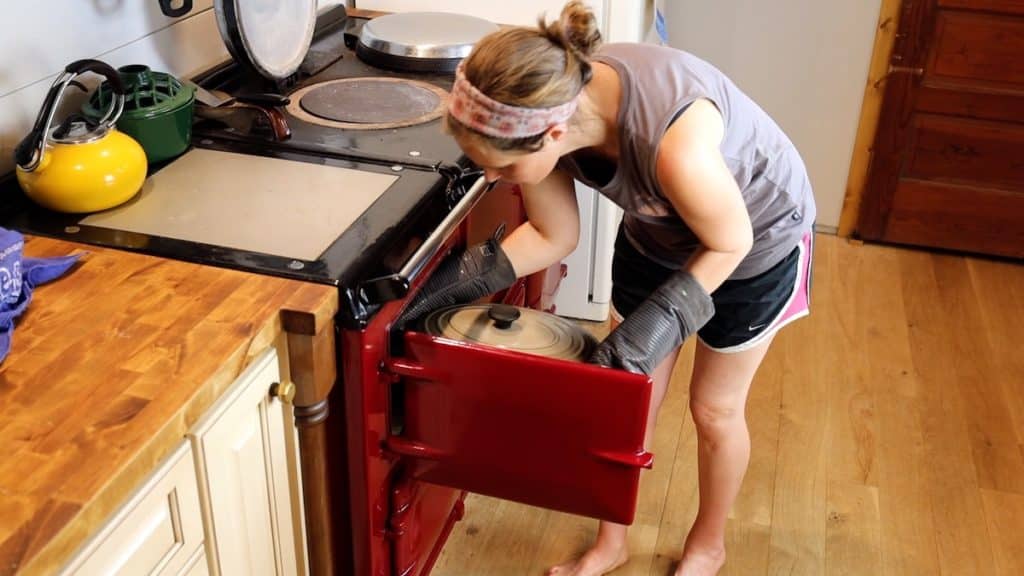
2. Do you have a rough idea how many degrees difference your AGA oven makes in your home?
Our estimate is that on average it raises the temperature in our home by 5° F. That said, the majority of the heat is concentrated in the kitchen. We have a small ranch and you really don’t feel the temperature difference much in the bedrooms, or even the living room which is right next to the kitchen.
Our best advice is to consider how often you run your air conditioner. If you are in a climate where you are constantly running your AC, then having an AGA might not be worth it since they will constantly be at odds and running up your bills.
We generally only run our AC when it gets in the high 80’s, which is not that often in our Midwest climate. Otherwise, we do just fine opening windows allowing some of the added heat from the oven to vent.
Another strategy, which is fairly common in the UK, is to turn off your AGA during the summer months. You can easily get by for a couple months with a toaster oven, crock pot, grill, or maybe even a backup oven in the basement.
3. Have you pressure canned on your used AGA stove and how did it work?
Yes! We have successfully pressure canned. This was a question/concern we also had but we were totally amazed with how smoothly the process went.
We start with our pressure canner on the boiling plate. Once it has gotten to pressure, then we move it to the simmer plate.
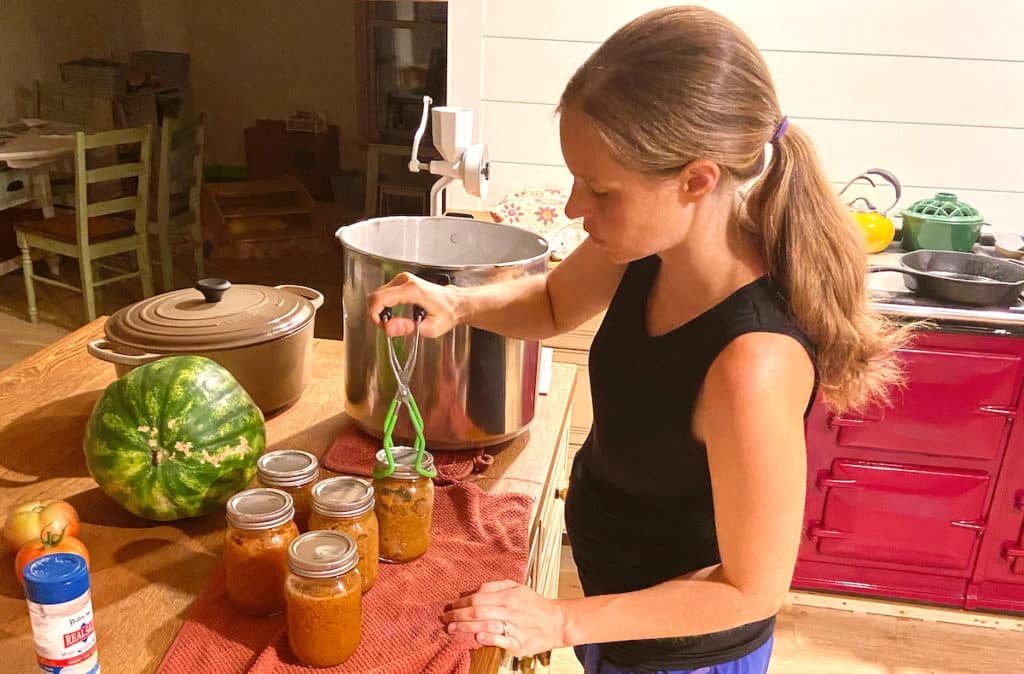
To maintain a constant pressure, you will need to adjust the position of the pressure canner on the simmer plate until you have it stabilized. The center of the plates are hotter than the outsides, so adjust accordingly. You’ll also want to note that the plates do lose temperature over time when opened.
It took a bit of monitoring and shimmying, but overall, it was a simple and straightforward process.
4. Does having a fridge next to your AGA affect how often your fridge runs?
We’ll start by saying that it’s probably not the ideal design scenario to have your fridge next to an oven that’s always on and radiating heat. That said, we don’t notice our fridge running that often and don’t think it affects how often it runs all that much.
We do have a 3” cabinet spacer between them that helps dissipate some heat. Otherwise, both the oven and the fridge are well insulated and they seem to work next to each other just fine.
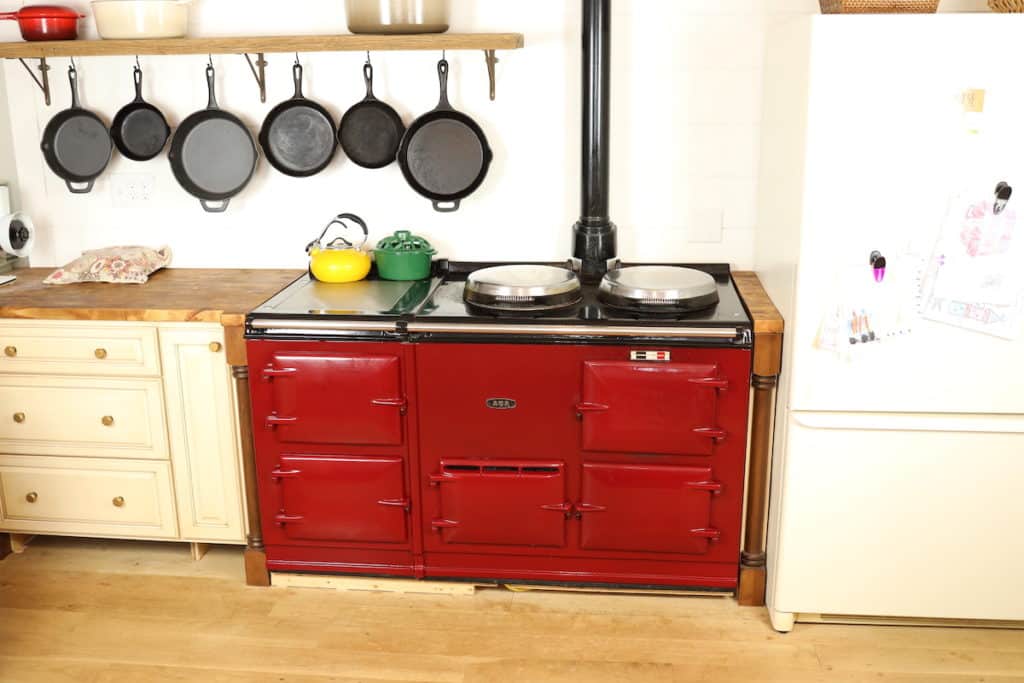
5. What does an AGA stove cost in utilities to run a month?
We estimate our utilities to be on average about $10/month higher with our AGA. This was a pleasant surprise after bracing ourselves for a much higher figure. That said, this is a rather complex question to give any exact answers to. Especially with seasonal changes.
Here’s a seasonal breakdown of what we experience:
Summer. In the heat of summer we have the double inefficiency of burning gas 24/7 for heat while running our air conditioning on hotter days. This obviously increases both our gas and electric bill.
Spring/Fall. In the milder spring or fall months we find that we almost never turn on our furnace to heat our house. The heat that the AGA radiates is sufficient to keep our home at a comfortable temperature.
Winter. This is where the AGA really shines. We find that our furnace runs significantly less in winter time because of the heat from the AGA helping to reduce our overall gas bill.
The oven itself does run very efficiently. It takes less energy to maintain heat than it does to create it. Because of how often we use our AGA (almost all the time!) we find it well worth the extra cost to operate.
6. How did you install your used AGA stove? Was it straightforward?
We installed our AGA on our own. With some planning, a background in construction, research, and talking to professionals, it all went fairly smoothly. Thankfully our AGA has run great!
That said, installing a used AGA is no simple task. But it’s not rocket science either. They are possible to install yourself. However, if you do not have a familiarity with HVAC and home construction, we recommend you either consult with or hire professionals for installation.
What we share here is also just our experience specific to our oven and setup. You should do your own homework on dimensions, AGA’s recommendations and requirements, and local building codes specific to your location.
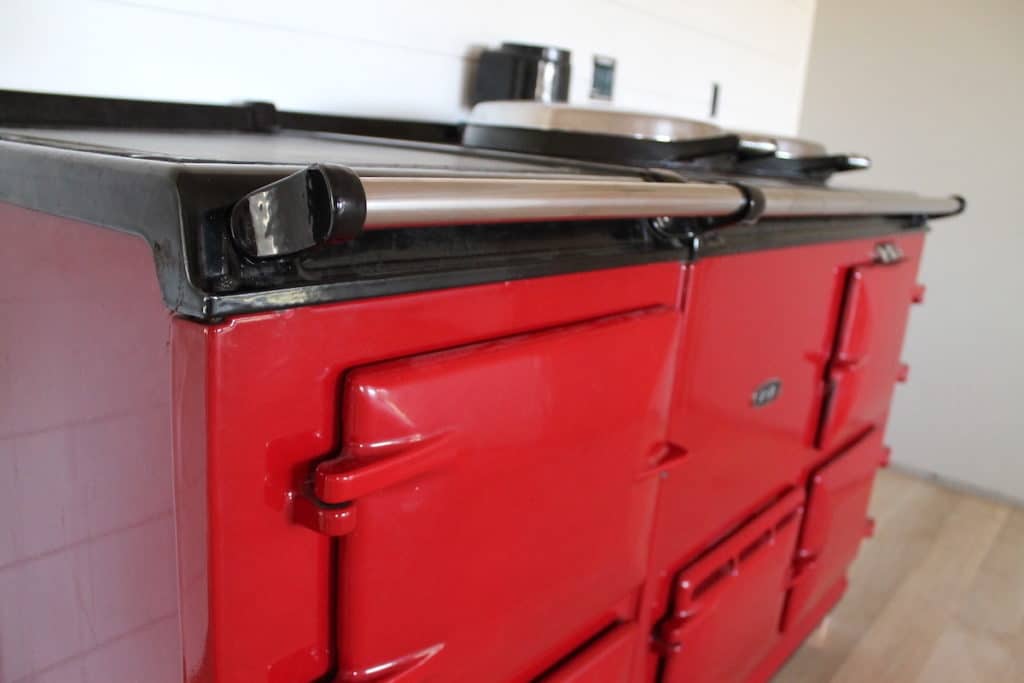
The primary questions we’ve received are about the flue pipe, plinth, and gas connection.
Flue Pipe
Most traditional cast iron AGA cookers have a black enameled flue pipe coming out the top. That flue pipe ultimately needs to be vented outside. You can either run it straight up through the ceiling, through your attic, and out through your roof. Or, they can also be bent to run in the wall cavity behind the stove and either exit the house through the exterior wall or through the roof.
Any way you run it, most local codes will require a Type B Vent pipe be used once the pipe penetrates the ceiling or wall. This is a double walled pipe for hot applications where the pipe comes in contact with combustible materials.
One thing worth mentioning is that if you first turn on your AGA when it is cold, expect lots of condensation to drip down from the flue pipe. We were caught off guard when this happened, but after talking to an AGA technician, were assured that it is a normal occurrence when first turning on an oven in cold temps. The condensation happened for the first 12-24 hours and we were able to control it with a towel at the base of the flue pipe.
Plinth
A plinth, or hearth, is required under your AGA cooker to act as a noncombustible base and bring your cooker up to the height of your countertops. You can buy premade plinths, but they are also pretty straightforward to make your own out of basic building materials.
In our case, the oven needed an additional 2-1/2” to be raised to counter height. This is somewhat standard, but you will want to confirm that height for your application.
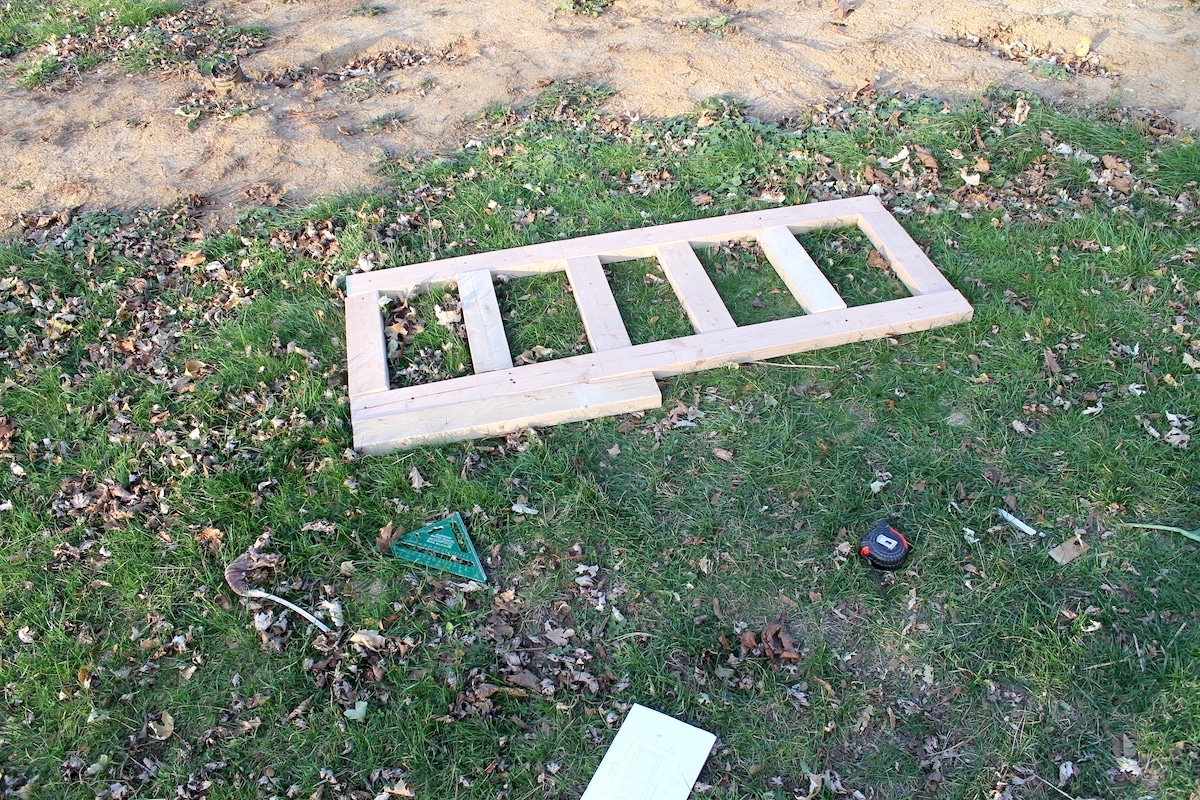
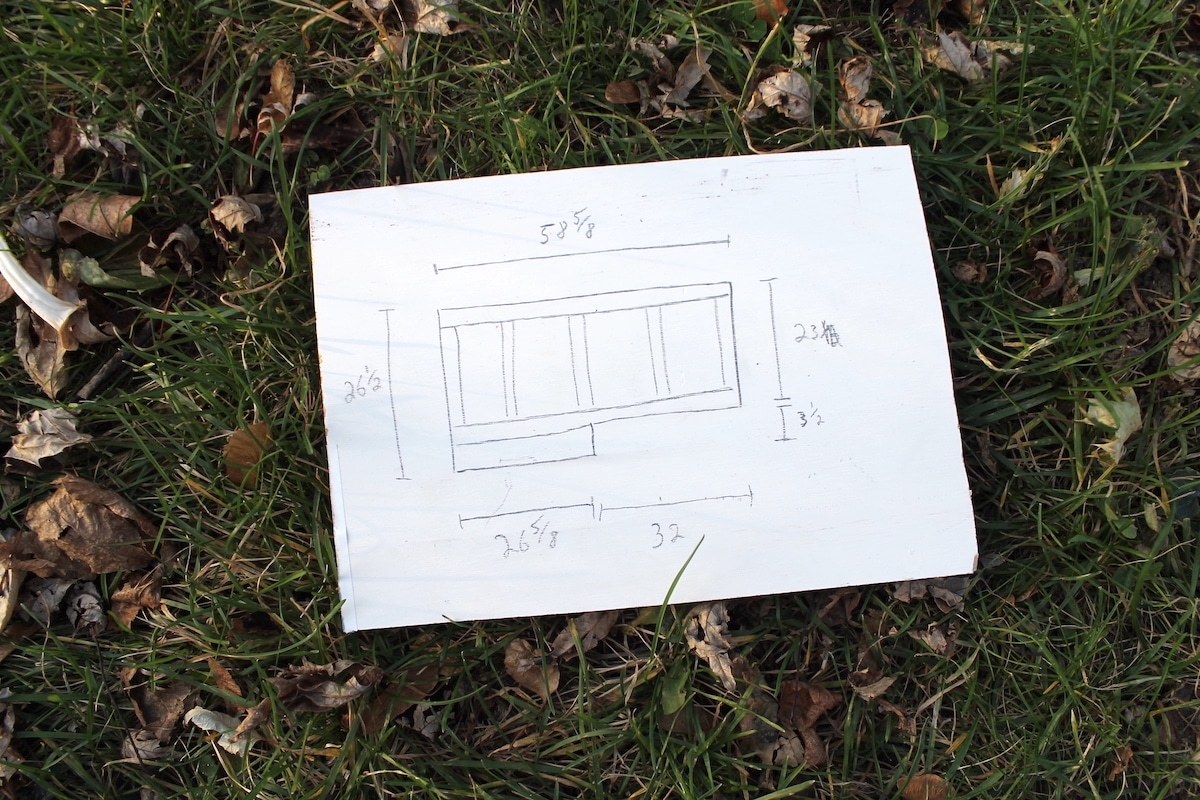
I built my plinth by laying 2×4’s flat and building a basic frame. I then placed 1/2” plywood on top of the 2×4’s. On top of that I placed 1/2” cement board. Cement board is a non-combustible material, which is required for the top of your plinth. Another option is a layer of sheet metal on top.
Another tip is to mind the location of your gas connection when building your plinth.
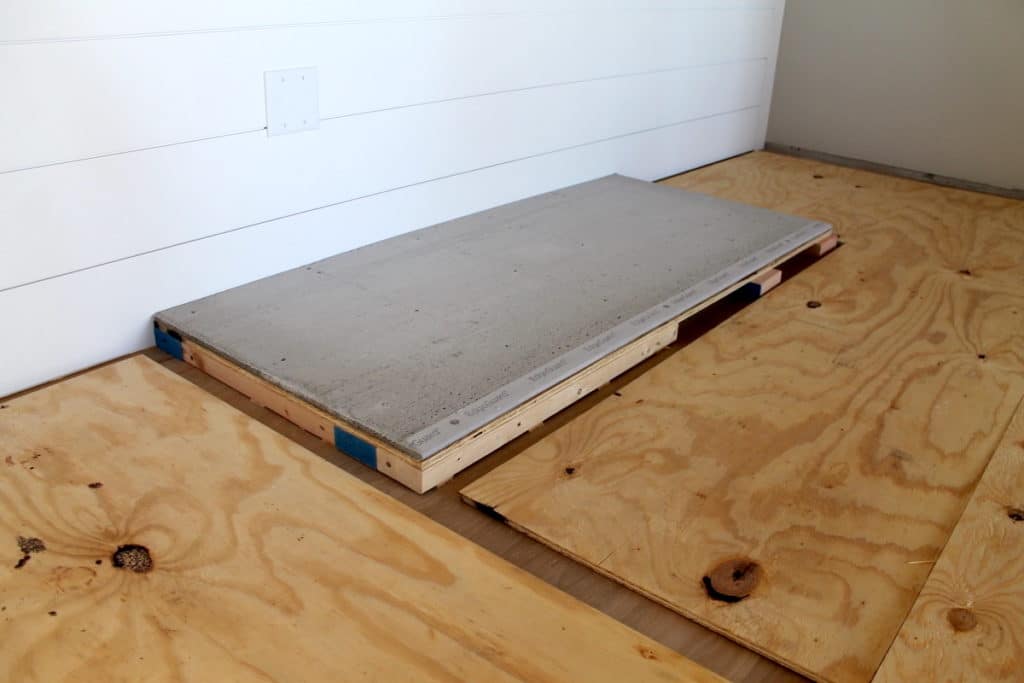
Gas Connection
The gas connection on our unit enters the AGA roughly at the center of the burner chamber about 2” back from the front of the cooker. You will want to verify the exact dimensions and layout for your specific model – some ovens are built to accommodate a different gas connection routing.
Typically, a gas pipe is brought up through the floor directly under where the gas pipe enters the unit. In our case, to avoid drilling a hole in our floors (in case we or future owners decided to not have an AGA in the future) I ran a flexible gas pipe that came up more toward the wall, bent around the side and front of the plinth, and then bent up into the unit.
This approach worked great but was a little tricky making that final bend and connection into the burning chamber.
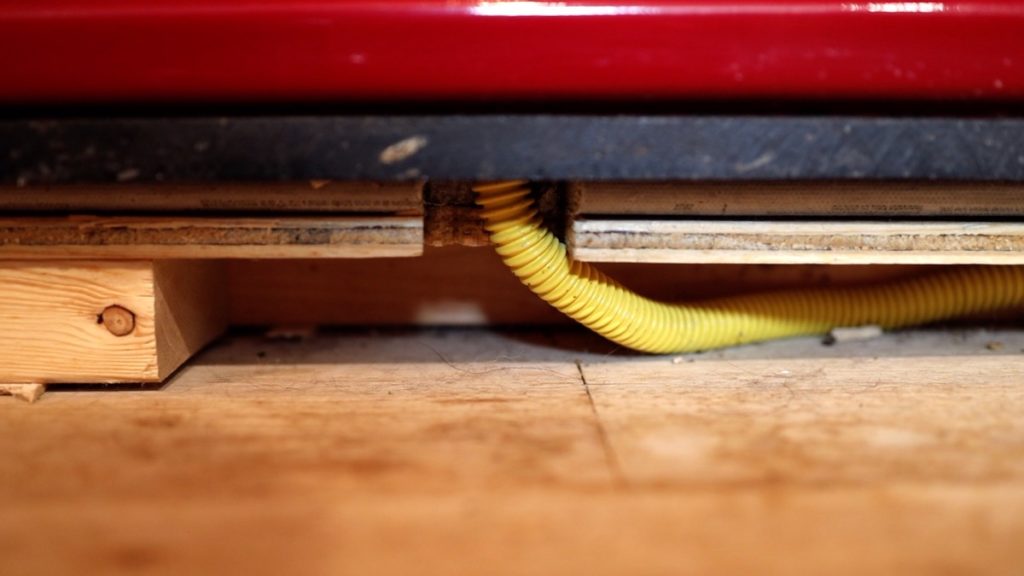
Other installation Considerations
Electrical Connection: I couldn’t believe this initially, but traditional cast iron AGA’s do not require an electrical connection. It is my understanding that newer models do, so you will want to verify the electrical requirements for your specific AGA.
Spacing Behind Cooker: Again, you should verify what AGA recommends for your unit, but we installed ours with a 1-1/2” gap between the back of the oven and the wall. I also lined the wall behind the oven with sheet metal for an extra non-combustible layer as an added safety precaution. The sheet metal is hidden so you do not see it.
7. Do AGA cookers need regular maintenance? Are there AGA service technicians?
AGA recommends the cast iron, gas models be serviced every 12 months by a certified technician. That being said, we have not serviced ours yet and it is running fine. Speaking to the previous owner, they also never had their AGA serviced in almost 10 years of ownership and it ran very reliably for them.
You can make that call for your oven based on your level of comfort and ability to diagnose and fix issues when they come up. The ovens are very basic machines with few parts that will ever need replacing.
But what about when you do need your AGA cooker serviced? AGA does have certified technicians in the USA that have been trained to install and service their ovens. Finding them, however, can be a bit of a challenge. Especially if you’re in a more rural or remote area.
The first place to look is agarangeusa.com. There you can find a listing of AGA dealers and technicians by location. If there are no technicians listed in your area but there are dealers listed, I recommend you try calling the dealers for information or to see if they know of any service techs.
What we had the most luck with was talking to the AGA owners we came across in our search. Other local AGA owners are your best resource. They may have a name of a service technician for you or be able to help with whatever issue you are trying to resolve.
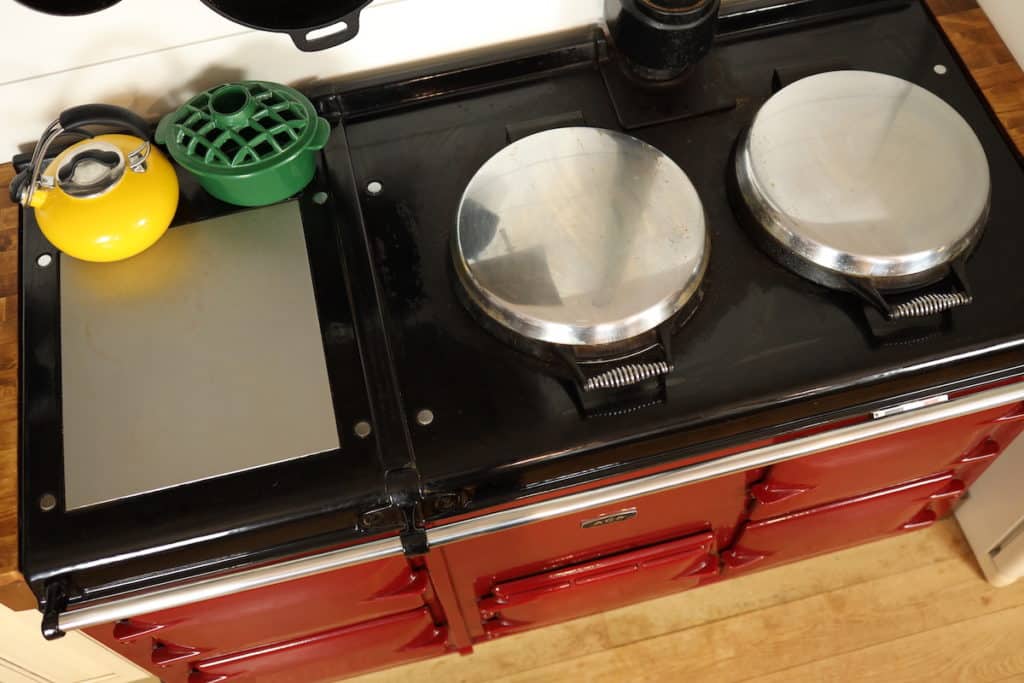
Replacing AGA Insulation
The biggest maintenance consideration with an AGA is that they will occasionally need to have the insulation inside the oven repacked. We’ve read that this is needed as little as every 20 years, or as long as every 50+. The main sign this work is needed is when your AGA struggles to maintain consistent temperatures or heat is being lost in parts of the oven where it should not be escaping.
This instance is where having the number of a service tech on hand might be essential. Inside the ovens are packed with vermiculite insulation and a top insulation blanket. The vermiculite compacts over time and the rockwool blanket deteriorates. At a minimum the oven needs to be partially disassembled, have all the insulation removed, and then replaced with new insulation and put back together. Some ovens may need a more extensive rebuild that involves a complete disassembly and replacement of insulation, worn out parts, and gaskets and seals.
8. How did you move your used AGA cooker? Did you hire movers?
We hired professional movers and had them move it as one massively heavy unit.
That said, the proper way to move a cast iron AGA stove is to disassemble it, move it piece by piece, and then reassemble it in its new location. That is how newly purchased AGA’s come in the first place.
Our research and conversations taught us that inside the ovens are finely tuned machines and moving them as one solid unit runs the risk of throwing something out of whack. If this occurs, heat may not be distributed property among the different oven compartments and burning plates. Worse yet, we’ve also heard horror stories of the cast iron shell of the cookers cracking when lifted or torqued in the moving process.


In our case, we were under a deadline to get the oven moved out quickly and the owner required we hire professional movers. There was no time to figure out disassembling it, so we needed to move it as a solid unit.
It took 4 movers, a truck with a lift gate, commercial grade moving equipment and a lot of effort to get it from point A to point B. Below are the main lessons we learned.
Considerations when moving an AGA:
- Make sure your movers know what they are getting into. Give them the exact weight and dimensions. Let them know it’s no ordinary oven!
- Make sure they have the proper equipment. Our movers rolled it on a commercial dolly, shimmied it into place with some sort of heavy-duty pry bar, and rolled it into our house with a ramp that could hold that much weight.
- Protect your space! We lined our floors with plywood for protection. You’ll also want to make sure as much is moved out of the way as possible to give the movers ample room to maneuver your cast iron beast.
- Get it in the exact spot! Don’t let those movers leave until the job is done. Once it’s in place, it’s in place for a long, long time. If it needs to move ¼” to the left, work with the movers to get it exactly where you need it no matter how long it takes and however many groans you’re met with.
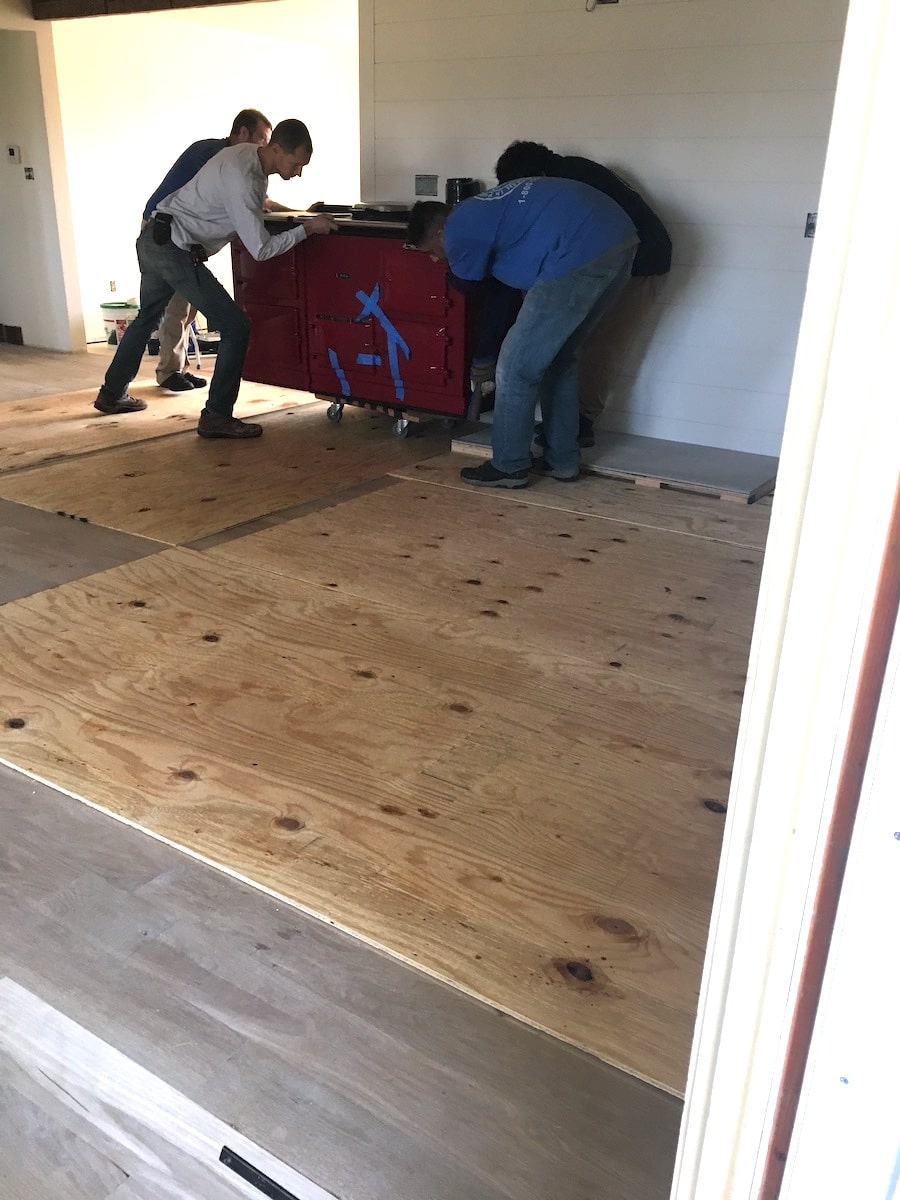
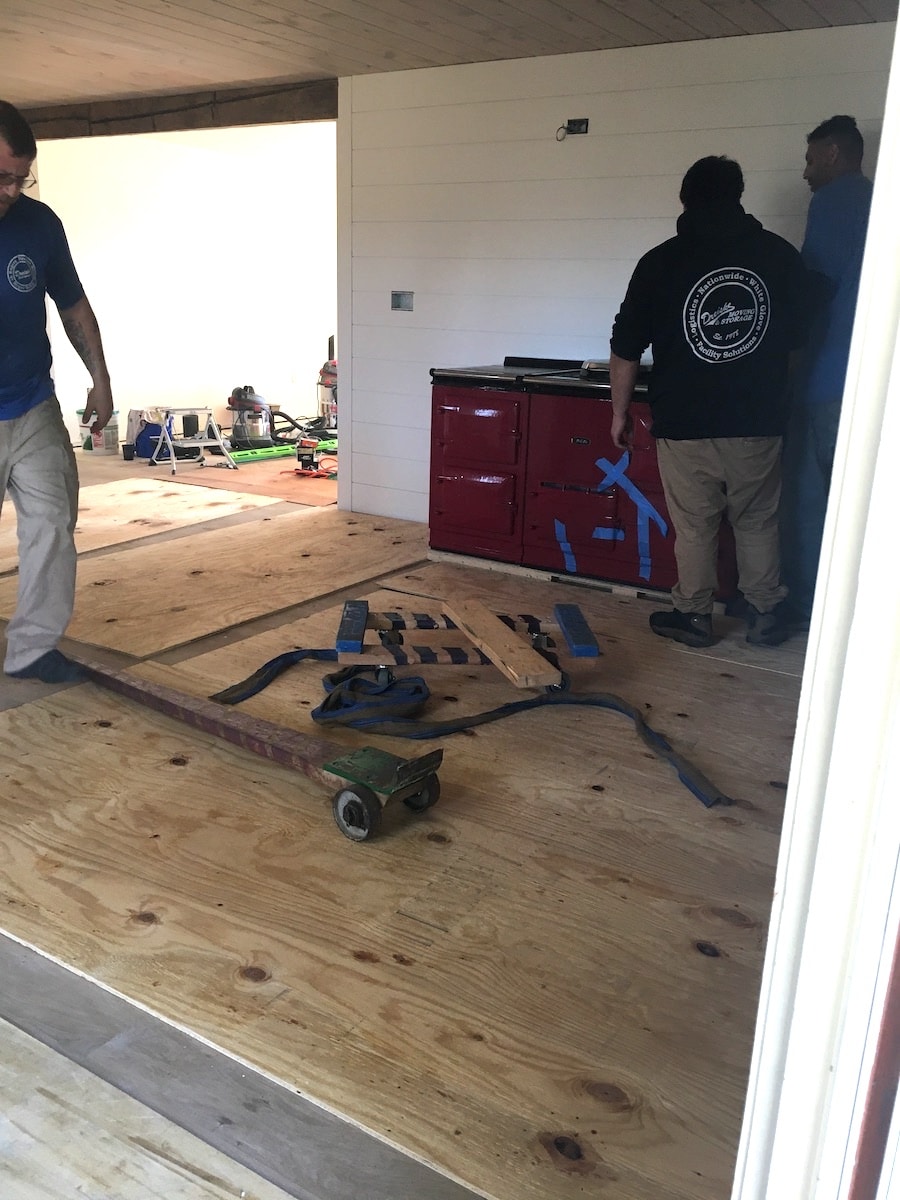
9. Are AGA ovens safe? Especially with children?
We have a young family with kids ranging from 1 to 6. After nearly two years of ownership, we have had zero AGA related injuries and feel they are completely safe to have in your home.
But, it is a very legitimate concern, and one that we had too. The oven doors do get hot – especially the roasting oven. You wouldn’t want to hold your hand on it. But it also won’t burn you from touching it. Our one-year-old comes up to our oven often and touches it without any harm done.
In terms of environmental safety within your home, a case can be made that AGA’s actually create better air quality than a standard, non-vented oven. There is research out there showing that an unvented range can actually create a lot of toxic fumes within the home, which you won’t experience with a vented AGA.
10. How do you like the red color?
We’ll be honest, red was not our top choice of AGA color. But, we have really come to love it!
Red, or claret, is a traditional color the AGA comes in. AGA’s were first introduced to the US in the 90’s and red was a popular choice then. So, when looking for a used AGA stove, this actually becomes a very important question because odds are you’ll come across a red one.
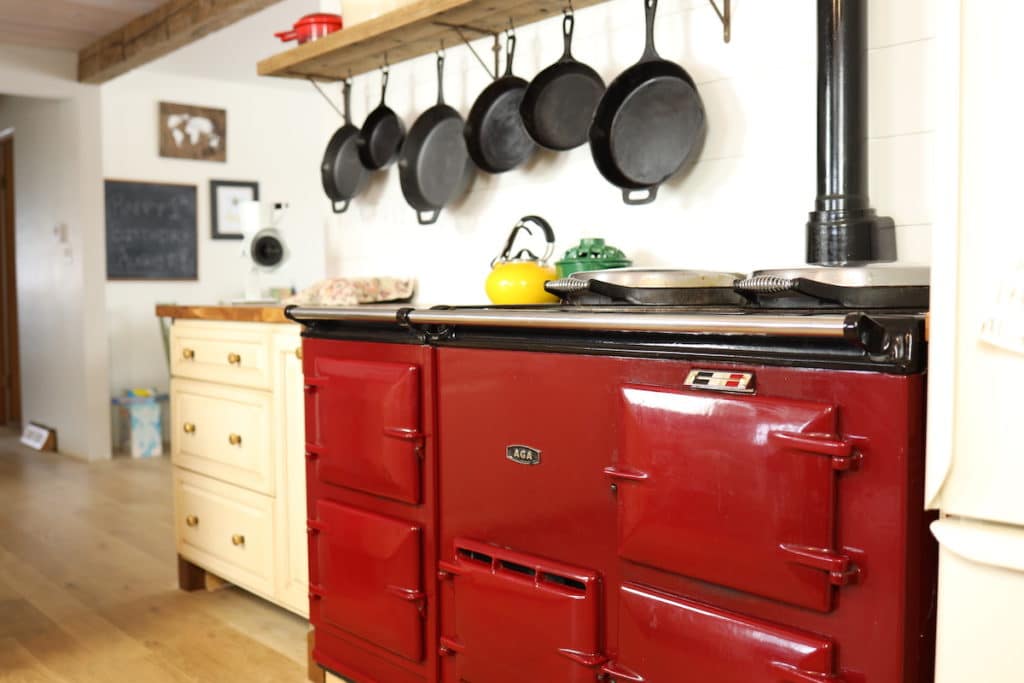
Our fear was that red would become the dominant color in our kitchen. But with neutral walls and cream-colored cabinets, the red really just stands out as an accent piece. Plus, the claret red gives this very soothing and timeless cottage charm.
We’d be willing to bet you’ll fall in love with your AGA regardless of color! It is more important you find the right oven and opportunity to fit your lifestyle and budget. The cookers themselves make a statement in any space and chances are you will be building your kitchen around the oven and not the other way around. At least that was our experience given the unique size and installation requirements.
Bringing Home Your Used AGA Stove!
No doubt you are still scratching your head about some of the details and logistics. Purchasing, moving, and installing a used AGA is an undertaking! But, as we conclude in our AGA Stove Review post, they are SO worth it!
So what questions do you still have? We found information on AGA’s really tricky to come by during our search so we’d love to see this space built up as a helpful resource for anyone looking to join the AGA community. Look forward to hearing from you!
Learn more about our experience with an AGA Stove:
Pin it for later!

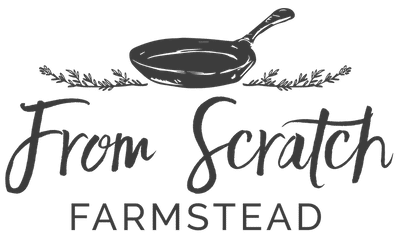

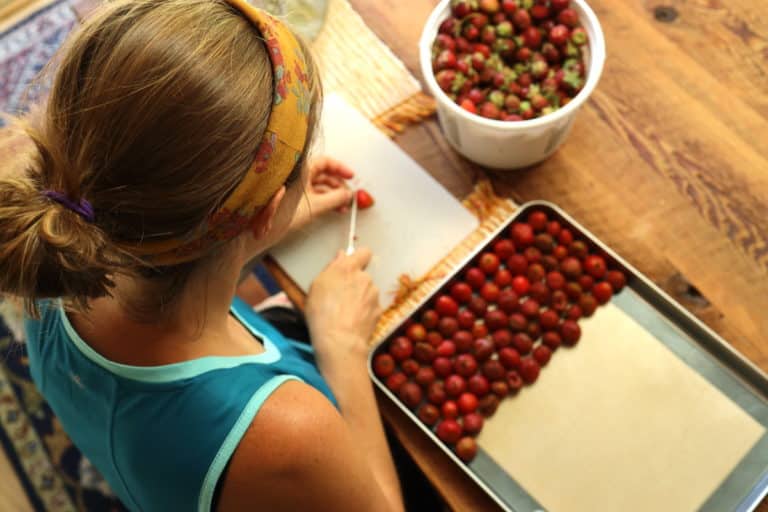

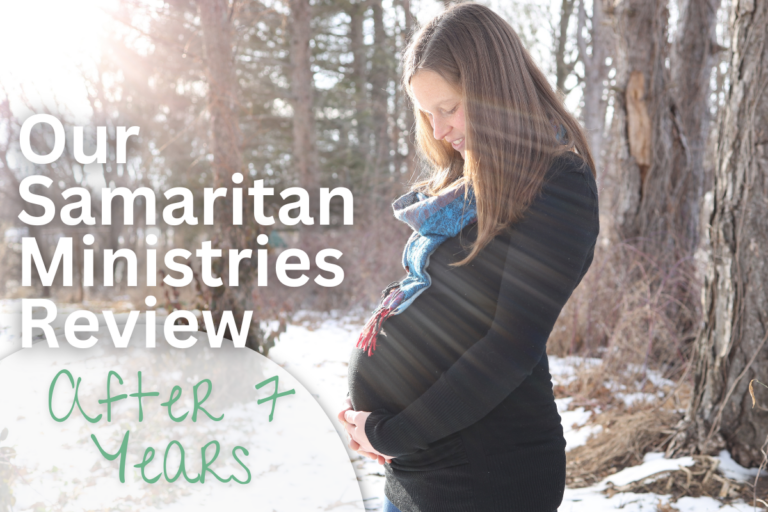
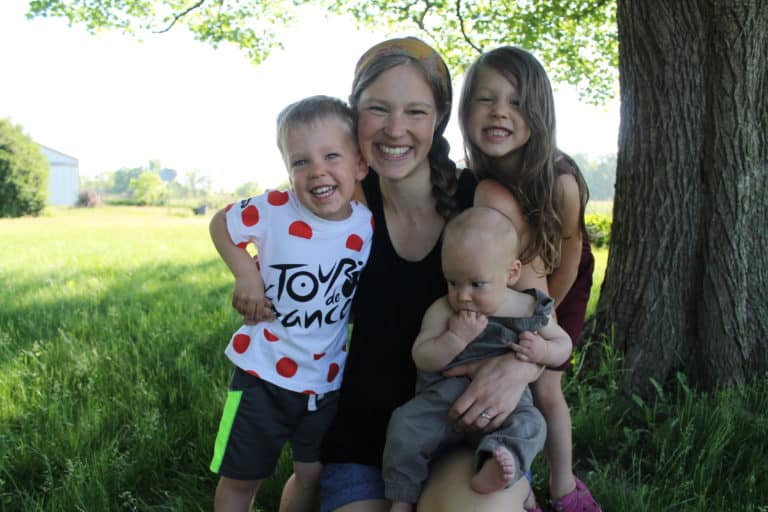

My family and I live in the states, Indiana, and we have a two oven gas Aga. Ours was in a crate when we got it so had to get an installer. Rob Barlow from central Michigan came down and did it for us. He was fantastic and would recommend him! I watched a bit of your video saying how it wasn’t that hard. Then i saw the pictures and realized yours came assembled!
So, I could talk for days about how wonderful our Aga is and how much we love it! I wouldn’t want to bore folks who don’t have one with it all though. I tell people all the time that if I had to choose between indoor plumbing and my Aga I’d be hard pressed to choose the plumbing! I do so many things with our Aga. It is so fantastic! And is easy and freeing! Yes, it is always on. Yes, it does make our little house a bit hot in summer. But is is so worth it! And it isn’t hard to cook on. No knobs. No settings. Cooking becomes less stressful because the radiant heat of the Aga just cooks so much better.
When I first started seeing them I read reviews and how people said food was so much better from an Aga. I thought how can that be? A stove is a stove. But is better. Even toast is better! There’s a difference!
Oh man, couldn’t agree more! It’s such a fantastic cooking experience – makes you feel like a pro chef! It does really become hard to imagine life without one. Thanks for the comment and so glad you love your AGA!